Battle Caterpillars: Actual for Russia
While many modern armies have captured the rampant fashion of mass transition to light wheeled armored vehicles and getting rid of tracked platforms, a number of world powers continue to maintain a relatively balanced fleet of tracked and wheeled combat vehicles.
The Russian army had only recently moved, at least declaratively, rather along the first path, however, in the light of the recent changes in the Ministry of Defense, it is possible that it will remain in the ranks of supporters of a second, more balanced approach. Moreover, the country's defense ministry has stepped up funding for the development of a unified Kurganets-25 tracked platform, which is led by the Special Design Bureau of Machine Building (SKBM) Kurgan Machine-Building Plant OJSC.
"Kurganets", "Knight" and the Ministry of Defense
In the report of the SKBM for 2011, there was a sharp increase in the bureau loading by work on the state defense order under the theme on the infantry fighting vehicle (the average multi-purpose tracked platform) Kurganets-25. The SKBM revenue in the order line of the Ministry of Defense of the Russian Federation amounted to almost 2001 million rubles in 300. Last year, a technical project was developed and defended on the topic “Kurganets-25” (25 tons - combat weight of the vehicle), and the development stage of working design documentation was launched.
The same report refers to the development of another promising infantry fighting vehicle (BMP) on the subject of "Knight." The machine of the new generation, according to the few information presented in the report, should be equipped with a gas turbine engine with electric transmission, its production is planned in one-link and two-link versions. In any case, the start of development work on one more tracked combat platform of the same purpose indicates the serious intentions of the Ministry of Defense regarding the development of this segment of light armored vehicles.
As for the Kurganets-25 platform, in 2012, the work on this program, according to official statements, is proceeding at an accelerated pace. It is planned that the first prototype will be submitted for testing next year. At least another year will be required to prepare the machine for launch into mass production. Adoption is expected in 2015. According to preliminary data, the layout of the "Kurgantsa" is a front-engine, the landing of the landing from the stern, the principle of equipment and booking is modular. One of the main requirements of the Ministry of Defense of Russia is to seriously preserve the ability of the platform’s predecessor, Kurgan BMP-3, to force water barriers along the way.
The only "flagship"
In the meantime, the BMP-3 with a powerful combined weapon system (100-mm gun - launcher 2A70, 30-mm automatic cannon 2A42, 7,62-mm PKT machine gun) remains the only (there is simply no other) "flagship" in the field of Russian export of light tracked armored vehicles. Kurganmashzavod's assets include large contracts for the supply of BMP-3s to the UAE (691 vehicles), Kuwait (122), South Korea (70) and Venezuela (about 130). About a hundred cars are included in a large package armory contracts with Saudi Arabia, which has not yet reached the stage of signing. The last contract was concluded with Indonesia - about 60 BMP-3F (F - naval, with increased amphibious capabilities) for about one hundred million dollars.
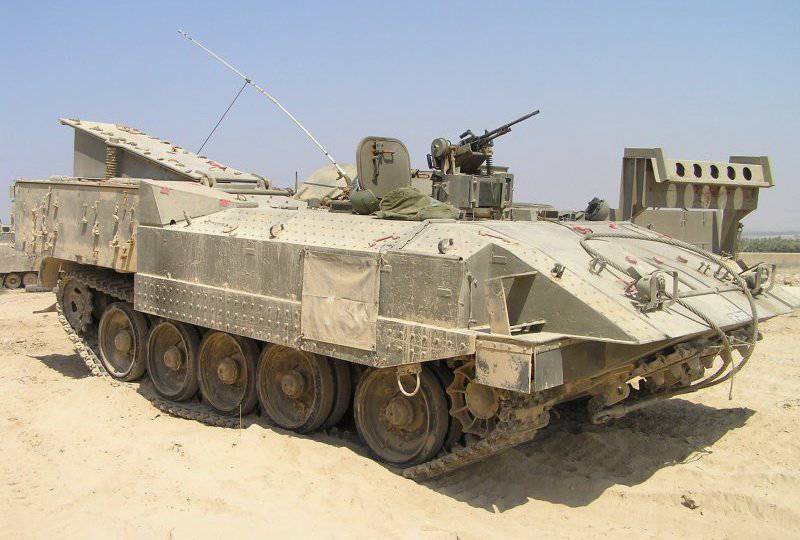
But now the export prospects of the car look far from bright. In 2010, the Russian Ministry of Defense refused to buy BMP-3 for the Armed Forces. Since then, the position of the military department has changed from sharply negative to a little slurred. At the beginning of 2012, First Deputy Minister of Defense Alexander Sukhorukov announced that the contract with Kurganmashzavod on the BMP-3 would be renewed, since "the manufacturer eliminated all the comments," which he did not decipher. In any case, the layout of the vehicle criticized by the Ministry of Defense remained the same - the engine-transmission compartment in the rear, in the center - the landing gear (two exits from the stern through the power plant), in front - the control compartment. Reinforcement of the reservation, on which the military insist, also has its limits, given the good amphibiousness of the machine at a combat weight of 18,7 tons.
During this year, the military department didn’t go further. Now in the troops about 450 BMP-3. As the representative of the Russian military-industrial complex told the author, the military delayed the issue of renewing the contract for the BMP-3, as they see progress in the development of Kurgants-25 and do not really want to spend money on the old platform. In addition, until recently, the dominant direction was the transition to the wheelbase - the wheeled armored personnel carrier BTR-82 / 82А went to the troops.
In general, the fate of the BMP-3 is unclear, although the machine has not yet developed its resource. In terms of export, the sale of the most advanced weapons complex BMP-3, which is now done in the form of installing a more modern combat module Bakhcha-U developed by the Tula Instrument Engineering Bureau, remains the most promising.
There is no change on the foreign front
Despite the serious advantages of wheeled armored personnel carriers and armored vehicles in high mobility and a less costly life cycle, tracked infantry fighting vehicles have undeniable advantages when operating in conditions of complete off-road, which is so important for Russian open spaces. Like the wheel brothers, foreign infantry fighting vehicles develop in three key areas - strengthening armor protection, increasing mobility, maneuverability and firepower.
The current generation of foreign BMPs is armed with a turret module with a stabilized automatic gun (caliber 25 – 40 mm) with an automated fire control system and around-the-clock surveillance system. The vehicles are equipped with a multifunctional opto-electronic suppression system, which includes sensors for detecting laser irradiation and means for jamming anti-tank missile systems of the enemy.
Automatic transmission, suspension is usually torsion, although there is a general tendency to move to hydropneumatic, which takes up less space (it is easier to replace in field conditions), stabilizes the combat module. In the future, many manufacturing companies are planning to switch to active suspensions.
Tracks remain steel with a rubberized inner treadmill. However, some machines are fitted with rubber-caterpillar tracks as standard. For example, Bronco of Singapore Technologies Singapore Technologies (STK) and tracked armored personnel carriers Bv206 and BvS10 British BAE Systems. This reduces the weight of the machine, reduces vibration and acoustic signature. BAE Systems also, as an experiment, equipped them with a heavier infantry fighting vehicle CV90. Canadian, Norwegian and Danish troops in Afghanistan equipped their old M113 tracked armored personnel carriers with rubber tires.
Some platforms had airborne loopholes for assault landing, like the Russian BMP-3, but this design feature was removed in exchange for enhancing the reservation of the car, which happened, for example, with the German Marder 1 and the American Bradley M2 / M3. In addition, in exchange for more powerful armor, many companies began to abandon the buoyancy of their cars, as is the case with the French AMX-10P BMP
Good old bradley
The Bradley M2 / М3 BMP (developed by FMS, later BAE Systems) is the most popular BMP in its class: 6785 machines, including 400 for Saudi Arabia. It was assumed that the replacement of this reliable, but the old machine will pass on the program FCS-ICV (Future Combat Systems - Infantry Carrier Vehicle), which in addition to a number of newest upgrades had to give the BMP rubber tracks. But the program was canceled in 2009 year. In February, the 2010-th Pentagon formulated the requirements for the creation of a ground combat vehicle GCV (Ground Combat Vehicle), and it was not specified what the chassis would be — wheels or tracks. The rest of the standard requirements - powerful protection and high mobility. British BAE Systems (450 million dollars) and American General Dynamics (440 million) became the winners of the competition, in which the five leading companies in the production of light armored vehicles participated. Judging by the submitted projects - this is all the same Bradley.
Reliable
BAE Systems has built Warrior infantry and 789 infantry fighting vehicles for the British Army 254 for Kuwait’s Desert Warrior infantry. Lockheed Martin will carry out a deep modernization of the machine, which thrifty Brits absolutely rightly do not intend to write off for scrap, after which the resource 449 units of this technology will be extended to the year 2040. In addition to replacing the entire electronic base, the machines will receive new, stabilized 40-mm CTAS guns instead of the old 25-mm M242, new armor and updated elements for attaching additional protection. In addition, some onboard components will be improved, including electronics. On this all the UK will spend one billion pounds.
German cars
The Schutzenpanzer Puma infantry fighting vehicle was developed for the German Army Project System and Management (PSM), a venture capital firm of the Krauss-Maffei Wegmann and Rheinmetall concerns. In 2009, the Bundeswehr ordered Puma combat vehicles for one billion euros from PSM 405, including all logistics, training equipment and crew training. The main combat weight - 31,45 tons, but with enhanced booking (configuration C) comes to 42 tons. Puma shipments are due to end in 2020. By that time, these battalions will be equipped with eight battalions, the current combat vehicle of the German Army Marder 1A5 will be removed from service.
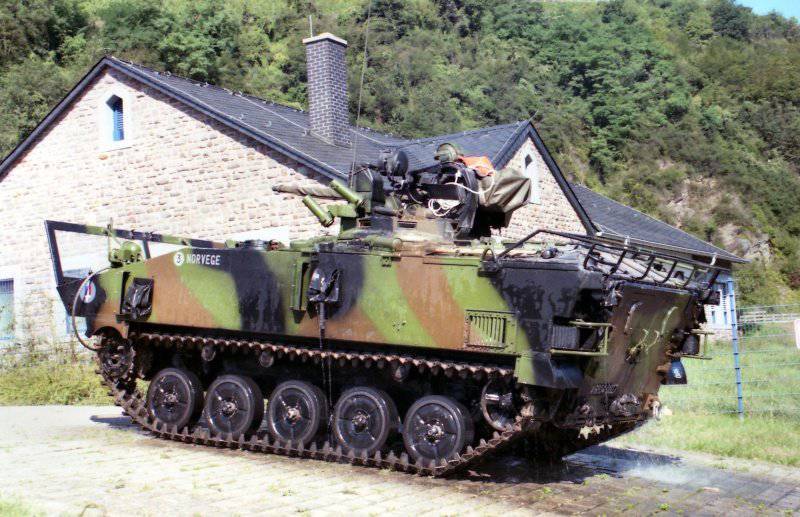
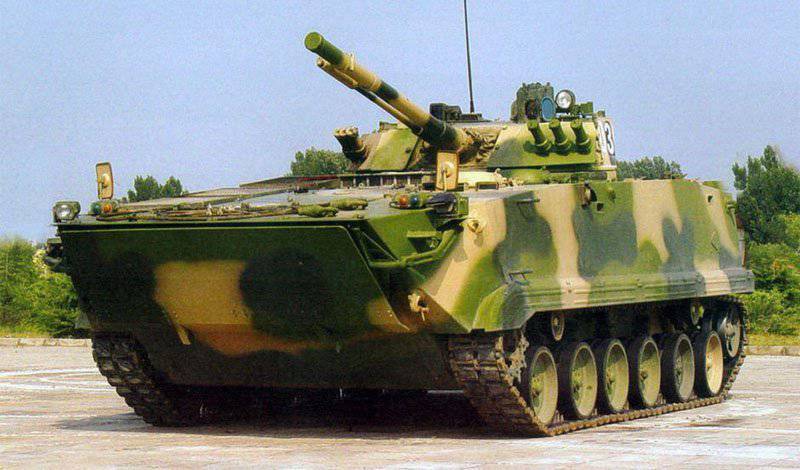
From 1971 to 1983, the 2,1 produced thousands of Marder BMPs (combat weight - 37 tons), most of which were upgraded to the A3 level. In 2002 – 2005, 74 machines have been upgraded to the A5 level, becoming heavier by eight tons due to enhanced mine protection. The 271 machine that was overhauled was transferred to Chile.
Western style
The French AMX-10P BMP (developed by Atelier de Construction d'lssy-les-Moulineaux) from the middle of the 70-x was the main transport and combat vehicle of the French infantry until it was replaced with a heavy wheel armored personnel carrier VBCI, developed jointly by Nexter Systems and Renault. Nevertheless, 108 modernized AMX-10P remained in service, which received enhanced booking, improved torsion bar suspension. At the same time, the car after the upgrade has ceased to be amphibious. The Georgian defense industry made a not very good copy of the AMX-10P called "Lazika".
Austrian Steyr-Daimler-Puch and Spanish General Dynamics Santa Barbara Sistemas developed ASCOD BMPs weighing 30 – 35 tons in two national versions - Ulan (112 machines) for Austria, Pizzaro (144 machines) for Spain. The Ulan differs from the Spanish model in a more powerful power plant and day / night surveillance system with an automatic target identifier.
Israeli Puma infantry fighting vehicle was developed based on the chassis of the British tank Centurion, BMP Achzarit - based on the Soviet T-55s captured during the Arab-Israeli wars, Namer with a high level of protection was created on the basis of the Merkava 4 tank, taking into account the experience of the 2006 Lebanon war.
East style
Armed with the Chinese PLA is the BMB ZBD-04 (NORINCO), which is largely a copy of the Russian BMP-3. She is also armed with a 100-mm gun, but she does not have guns. The WZ501 is a Chinese copy of the BMP-1 with the same 73-mm gun. The most massive Chinese BMP - the most simple to manufacture Type 89 / 90 on a tank chassis, armed with only 12,7-mm machine gun.
The Singapore STK has developed a Bionix infantry fighting vehicle with a Russian scheme for placing the troop compartment in the rear of the hull. South Korean Doosan K300 - copy of machines BAE Systems.
Turkish FNSS Savunma Sistemleri has created an original ACV-S car with an extended chassis that can be equipped with a combat module from the Russian BMP-3.
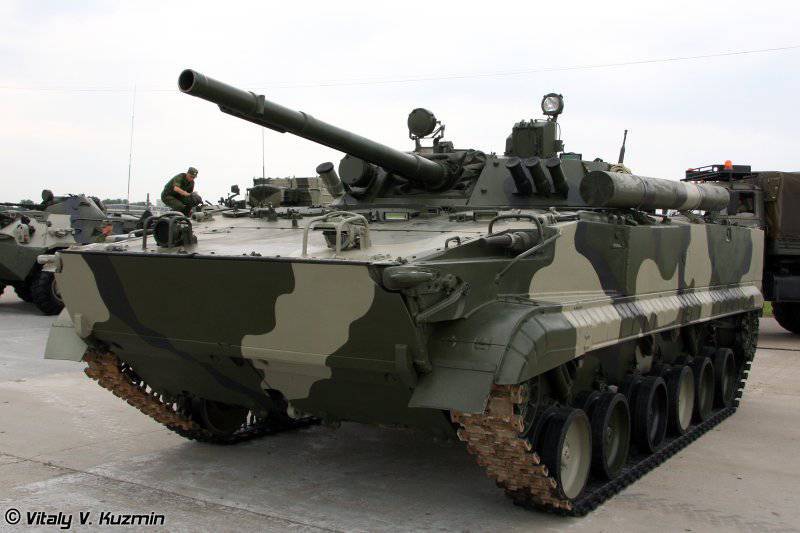
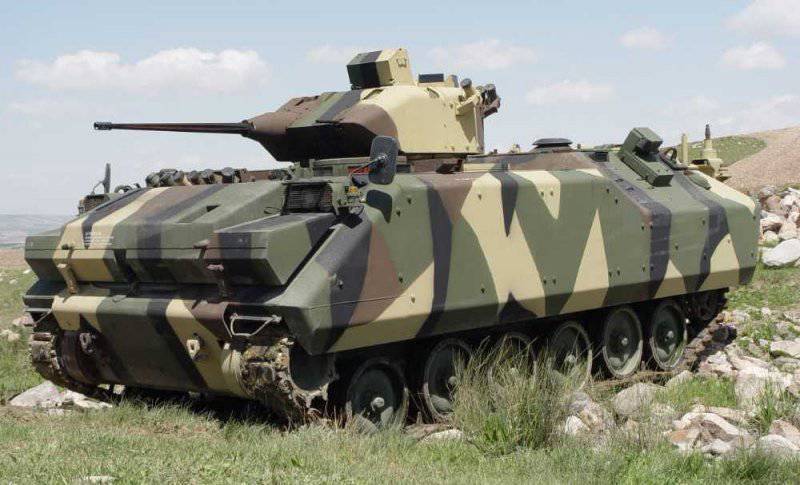
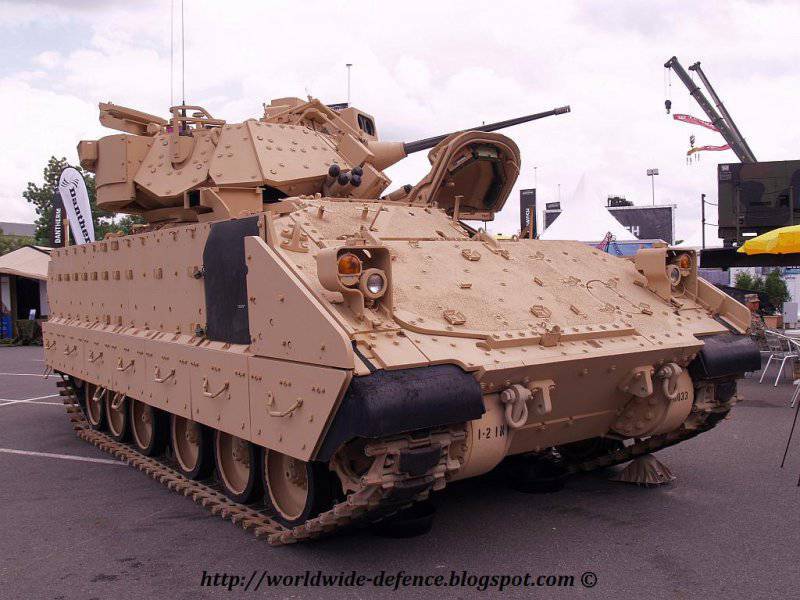
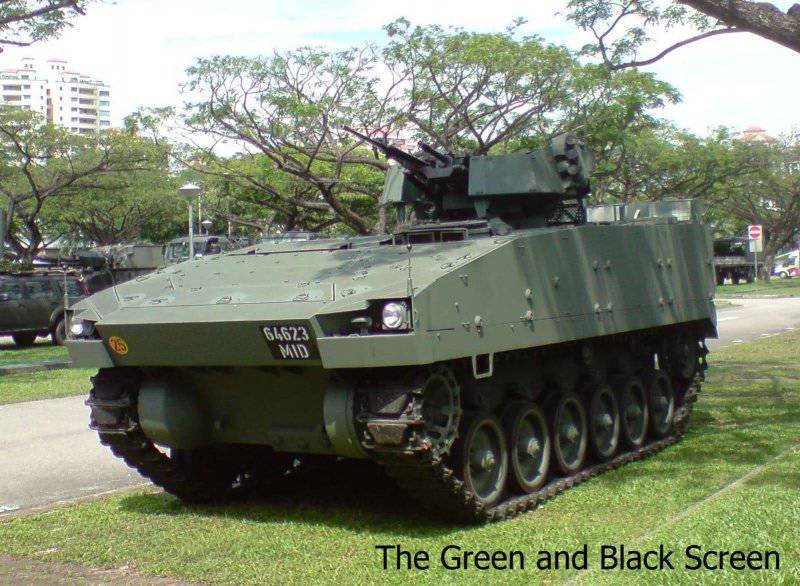
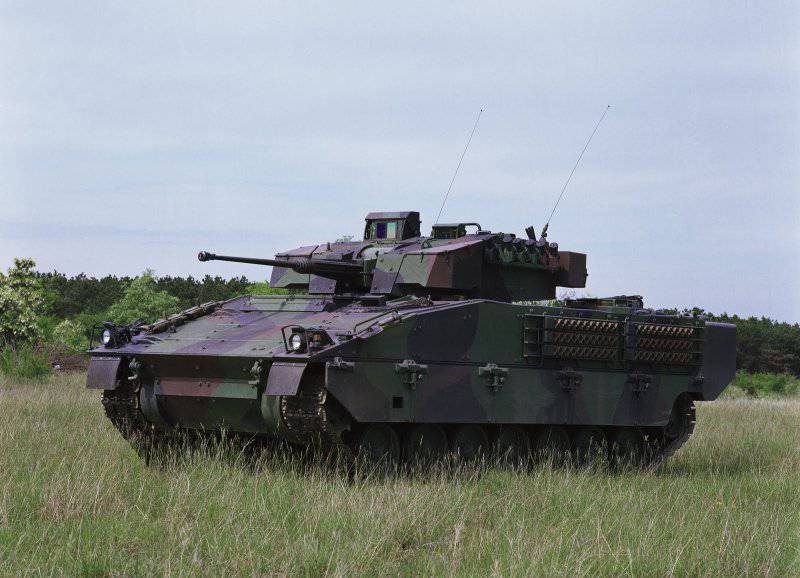
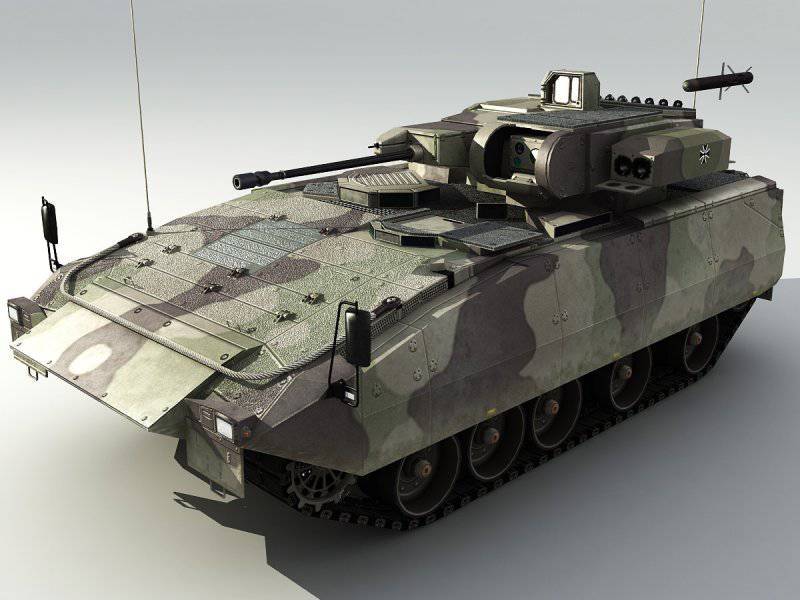

Information